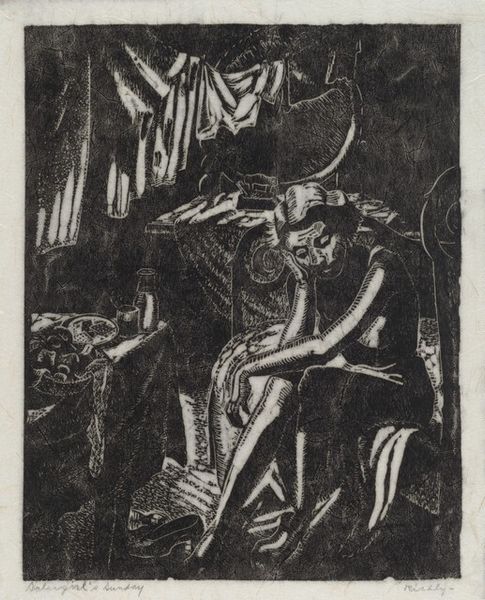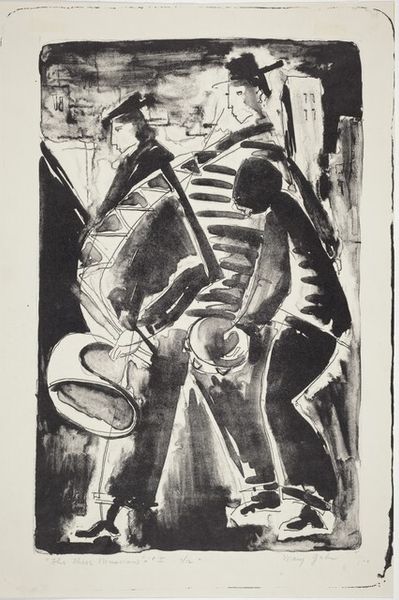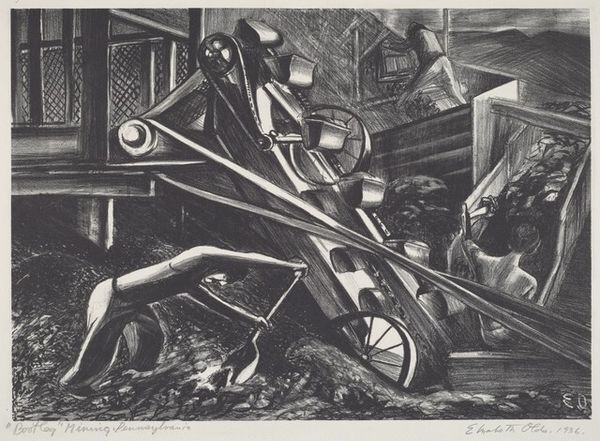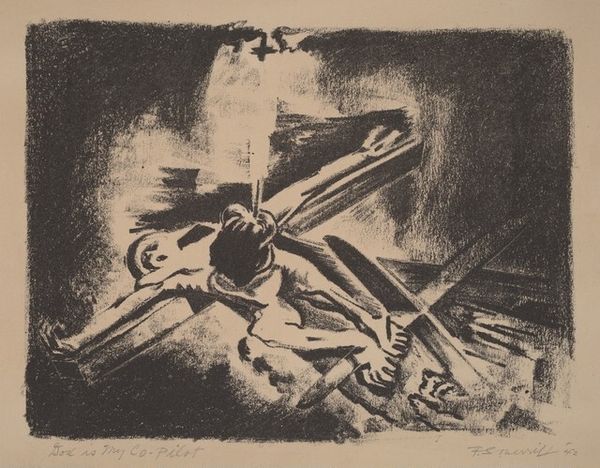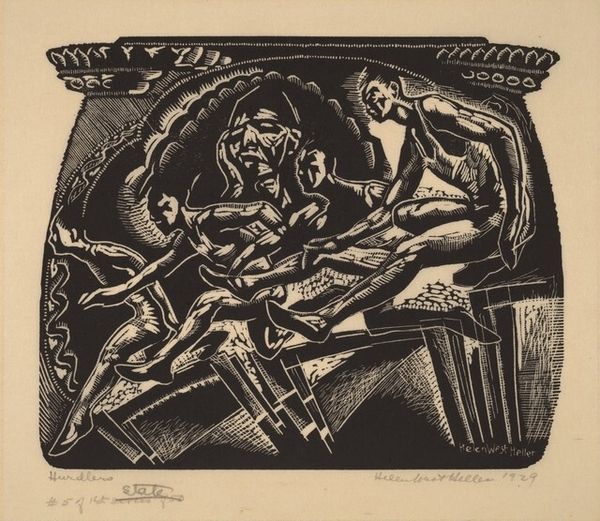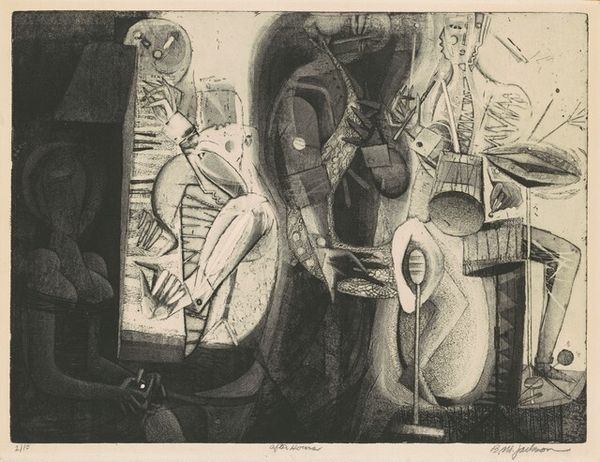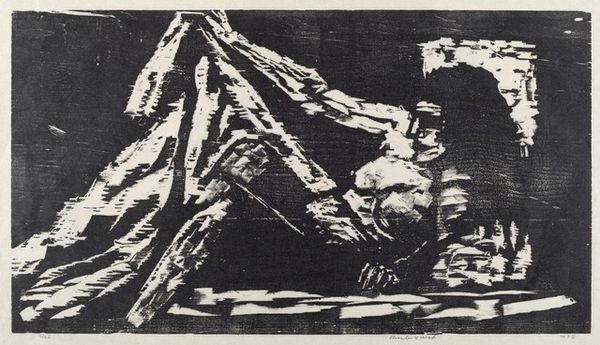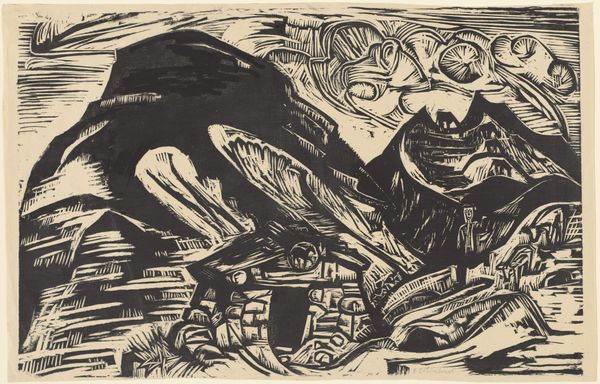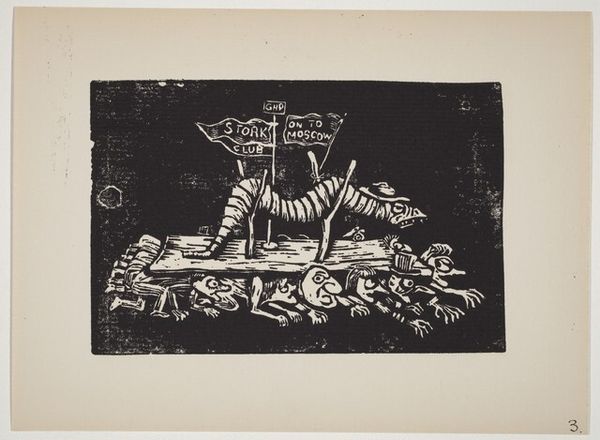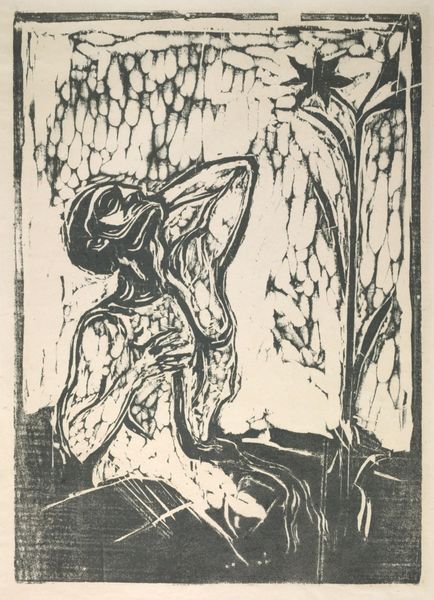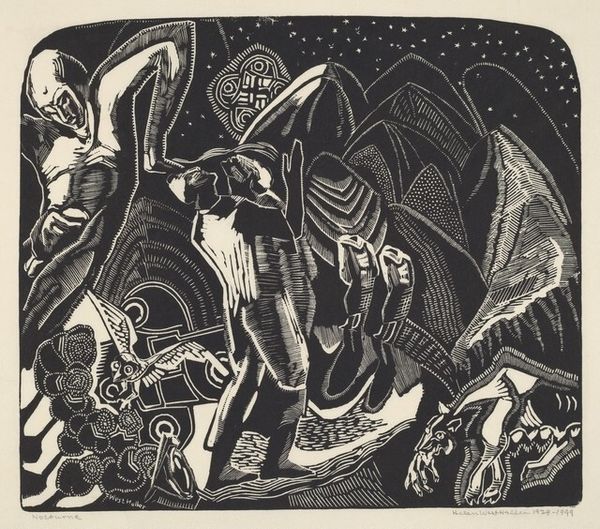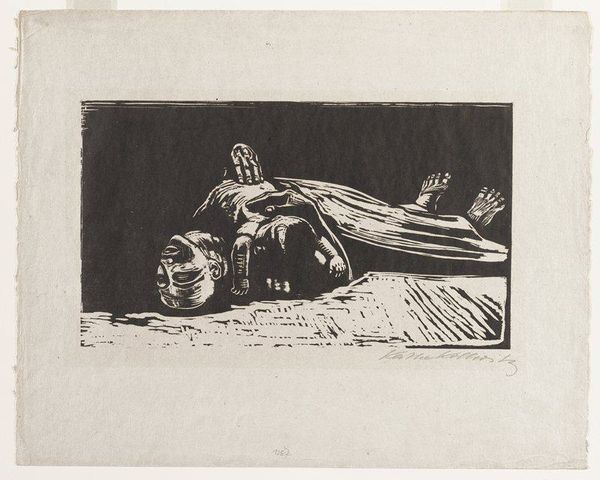
graphic-art, print
#
graphic-art
# print
#
figuration
#
line
#
modernism
Copyright: National Gallery of Art: CC0 1.0
Editor: This is Harold Persico Paris's graphic art print, "In Death Together," created around the 1950s. The stark black and white contrast gives it a really heavy mood. All those bodies piled up, the skeletal figures...it feels really oppressive. How do you interpret this work? Curator: That oppressive feeling, I think, speaks to the post-war anxieties of the time. Consider the social context: the shadow of World War II, the rise of the Cold War, existentialist philosophy taking hold. What you're seeing are bodies but also symbols of collective trauma. The artist may be encouraging us to question structures of power that perpetuate such devastation. How does the title, "In Death Together," resonate with you in this context? Editor: It sounds… defeated. Like we're all trapped in this cycle of violence and death together. Curator: Exactly! And think about who is “together” in death, but perhaps not in life. This could be a commentary on the way societal structures create inequalities that become most evident in times of crisis and mortality. Where do you see a symbol of resilience in the image? Editor: Hmm…maybe the upright figure, though even he looks broken. Still, he’s the only one with any height. It's really unsettling how they’re all connected, like a mass grave. Curator: Perhaps this print can be seen as a visual manifesto against the depersonalization of war and systemic injustice, linking individual experiences of suffering to broader social critiques. Are we really separate? Editor: This makes me consider who benefits from that "togetherness," and who is victimized by it. It isn't just death; it’s also about who is left to grieve and carry that pain. Curator: Yes. It challenges us to look critically at systems that prioritize some lives over others. That's how art creates impact, encouraging dialogue about power and responsibility. Editor: Thank you. I'll definitely carry that with me. I’m really glad that I learned that art is all about social responsability!
Comments
No comments
Be the first to comment and join the conversation on the ultimate creative platform.
